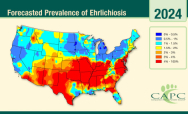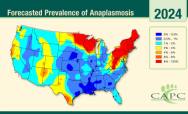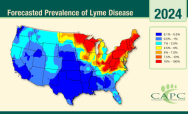All Categories
-
Parasite Forecasts
2024 Ehrlichia spp. Forecast
Nationwide, the high prevalence areas for ehrlichiosis are more wide-spread and less well-defined compared to other vector-borne pathogens.
Read Full Article -
Parasite Forecasts
2024 Anaplasma spp. Forecast
Anaplasmosis is a tick-borne disease that can affect both dogs and humans. Learn what the forecast for Anaplasmosis in your area will be.
Read Full Article -
Parasite Forecasts
2024 Pet Parasite Forecasts
Pathogens that cause heartworm disease, Lyme disease, ehrlichiosis, and anaplasmosis continue to increase and spread throughout the United States.
Read Full Article -
Understanding The Maps
Key Factors That Influence The Map Results
The CAPC Parasite Prevalence Maps are designed to show the proportion of pets tested which test positive for a given infection using available assays.
Read Full Article -
Understanding The Maps
CAPC Parasite Prevalence Maps: Criteria for Data Inclusion
The Companion Animal Parasite Council (CAPC) requires that the following criteria be met for inclusion of any data in its disease prevalence maps.
Read Full Article



